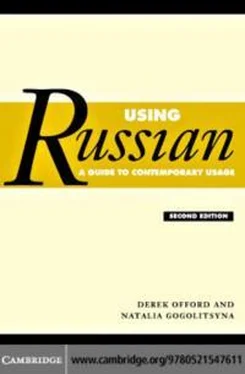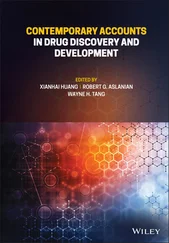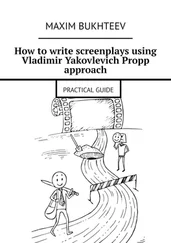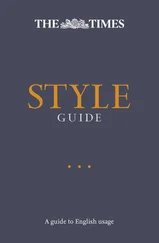This page intentionally left blank
Using Russian
Using Russian is a guide to Russian usage for those who have already acquired the basics of the language and wish to extend their
knowledge. Unlike conventional grammars, it gives special attention to those areas of vocabulary and grammar which cause most difficulty to English speakers, and focuses on questions of style and register which are all too often ignored. Clear, readable and easy to consult, it will prove invaluable to students seeking to improve their fluency and
confidence in Russian.
This second edition has been substantially revised and expanded to
incorporate fresh material and up-to-date information. Many of the
original sections have been rewritten, the passages illustrating register are all fresh and one brand new chapter has been added, providing a
clear picture of Russian usage in the twenty-first century.
derek offord is Professor of Russian Intellectual History at the
University of Bristol, where he has served as Chairman of the School of Modern Languages and Head of Department. His previous
publications include Portraits of Early Russian Liberals (1985), The Russian Revolutionary Movement in the 1880s (1986) and Modern Russian: An Advanced Grammar Course (1993), as well as numerous articles and chapters on classical Russian literature and thought.
natalia gogolitsyna is Language Assistant at the University of
Bristol. She has taught Russian as a second language at St Petersburg Pedagogical University, and has been a visiting academic at the
University of Essex. Her previous publications include Problems of Translation: Russian Words and Concepts with No Exact Equivalents in English (1995) and various articles on culture-specific words and concepts.
Companion titles
Using French (third edition)
Using German Synonyms
A guide to contemporary usage
martin durrell
r. e. batchelor and m. h. offord
(ISBN 0 521 46552 4 hardback)
(ISBN 0 521 64177 2 hardback)
(ISBN 0 521 46954 6 paperback)
(ISBN 0 521 64593 X paperback)
Using Italian Synonyms
Using Spanish (second edition)
howard moss and vanna motta
A guide to contemporary usage
(ISBN 0 521 47506 6 hardback)
r. e. batchelor and c. j. pountain
(ISBN 0 521 47573 2 paperback)
(ISBN 0 521 00481 0 paperback)
Using French Synonyms
Using German (second edition)
r. e. batchelor and m. h. offord
A guide to contemporary usage
(ISBN 0 521 37277 1 hardback)
martin durrell
(ISBN 0 521 37878 8 paperback)
(ISBN 0 521 53000 8 paperback)
Using Russian Synonyms
Using Italian
terence wade and nijole white
A guide to contemporary usage
(ISBN 0 521 79405 6 paperback)
j. j. kinder and v. m. savini
Using French Vocabulary
(ISBN 0 521 48556 8 paperback)
jean h. duffy
Using Japanese
(ISBN 0 521 57040 9 hardback)
(ISBN 0 521 57851 5 paperback)
A guide to contemporary usage
william mclure
Using German Vocabulary
(ISBN 0 521 64155 1 hardback)
sarah fagan
(ISBN 0 521 64614 6 paperback)
(ISBN 0 521 79700 4 paperback)
Using Portuguese
Using Italian Vocabulary
A guide to contemporary usage
marcel danesi
ana sofia ganho and timothy mcgovern
(ISBN 0 521 52425 3 paperback)
(ISBN 0 521 79663 6 paperback)
Using Spanish Vocabulary
Using Arabic
r. e. batchelor and miguel a. san josé
A guide to contemporary usage
(ISBN 0 521 00862 X paperback)
mahdi alosh
(ISBN 0 521 64832 7 paperback)
Using Spanish Synonyms
r. e. batchelor
(ISBN 0 521 44160 9 hardback)
(ISBN 0 521 44694 5 paperback)
Using Russian
A guide to
contemporary usage
Second edition, revised and augmented
DEREK OFFORD
University of Bristol
NATALIA GOGOLITSYNA
University of Bristol
Cambridge, New York, Melbourne, Madrid, Cape Town, Singapore, São Paulo Cambridge University Press
The Edinburgh Building, Cambridge , UK
Published in the United States of America by Cambridge University Press, New York
www.cambridge.org
Information on this title: www.cambridg e.org /9780521547611
© Derek Offord and Natalia Gogolitsyna 2005
This publication is in copyright. Subject to statutory exception and to the provision of relevant collective licensing agreements, no reproduction of any part may take place without the written permission of Cambridge University Press.
First published in print format 2005
- ---- eBook (NetLibrary)
- --- eBook (NetLibrary)
- ---- paperback
- --- paperback
Cambridge University Press has no responsibility for the persistence or accuracy of s for external or third-party internet websites referred to in this publication, and does not guarantee that any content on such websites is, or will remain, accurate or appropriate.
Contents
Preface to the first edition
xiii
Preface to the second edition
xv
Acknowledgements
xviii
Sources
xix
Note on transcription, stress marks and transliteration
xxii
Glossary of linguistic terms
xxiii
List of abbreviations
xxxiii
1
Varieties of language and register
1
1.1
The Russian language and its distribution
1
1.2
Varieties of language
6
1.3
Registers
9
1.3.1 The colloquial register (R1)
10
1.3.2 Demotic speech (D)
13
1.3.3 The neutral register (R2)
14
1.3.4 The higher register (R3)
15
1.3.5 Styles of belles-lettres (сти´ли худо´жeствeнной
литeрaту´ры)
17
1.3.6 Language of the internet (язы´к интeрнe´тa)
17
1.4
Illustration of register in vocabulary
18
1.5
Regional variation in Russian
19
1.5.1 Standard pronunciation
20
1.5.2 Classification of Russian dialects
21
1.5.3 Regional features
22
1.6
Current debate about standard Russian
25
2
Passages illustrating register
32
2.1
R1: from a TV show
32
2.2
R1: based on a conversation in a Russian internet chatroom
36
2.3
R2: magazine interview with a popular actor
40
2.4
R2: question-and-answer session with President Putin
43
2.5
R3a: academic style (modern historiography)
45
2.6
R3a: academic style (scientific writing)
47
2.7
R3b: official/business style (legal)
50
2.8
R3b: official/business style (commercial)
53
2.9
R3c: political journalism (reporting)
57
2.10
R3c: political journalism (comment)
60
2.11
Classical poetry
62
2.12
Literary prose
65
2.13
Language of the internet
68
v
Contents
3
Problems of meaning: Russian words
73
3.1
Homonyms
73
3.1.1 Examples of homonyms
73
3.1.2 Homonyms with different plural forms
78
3.2
Homophones and homoforms
Читать дальше












